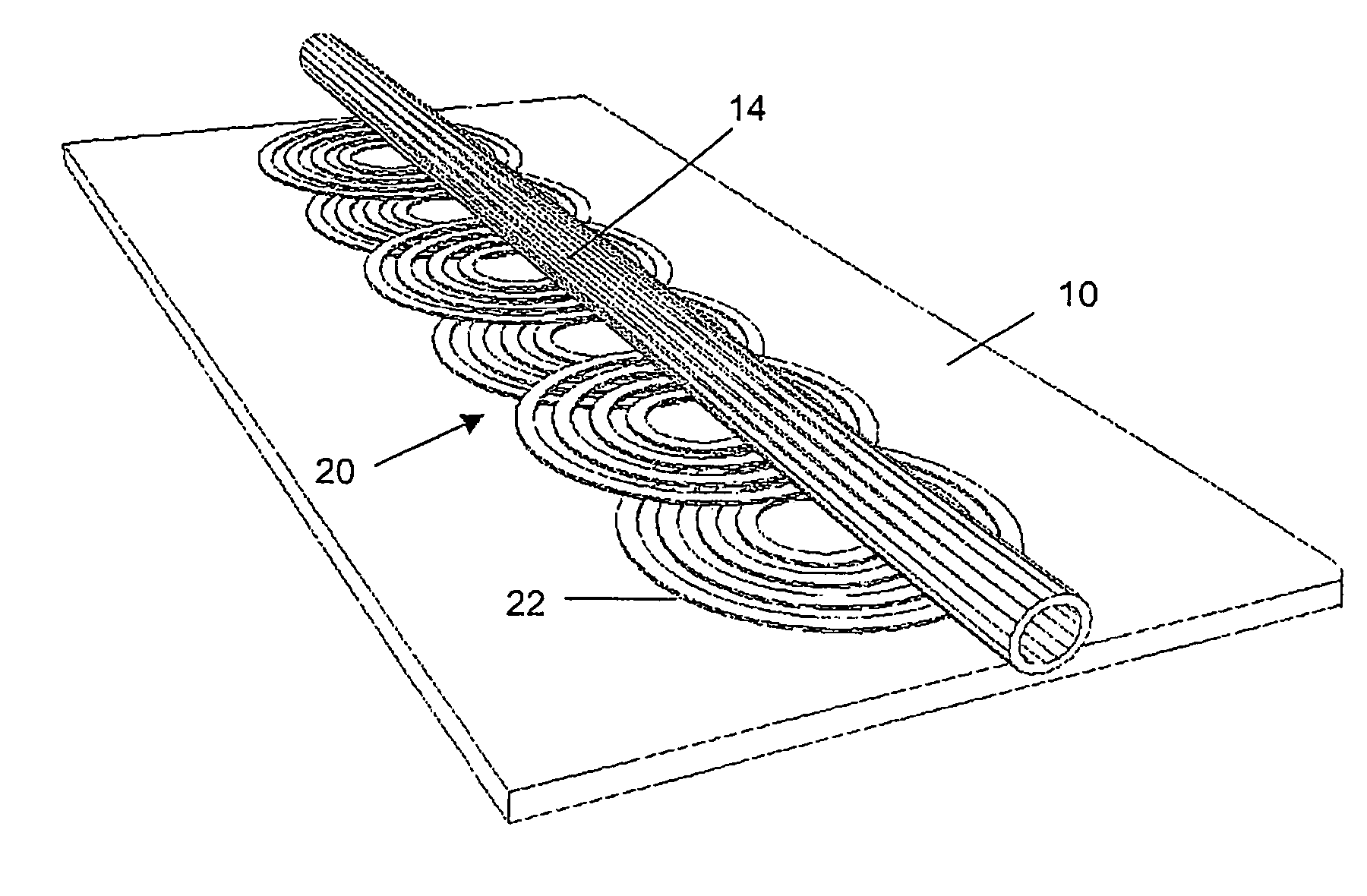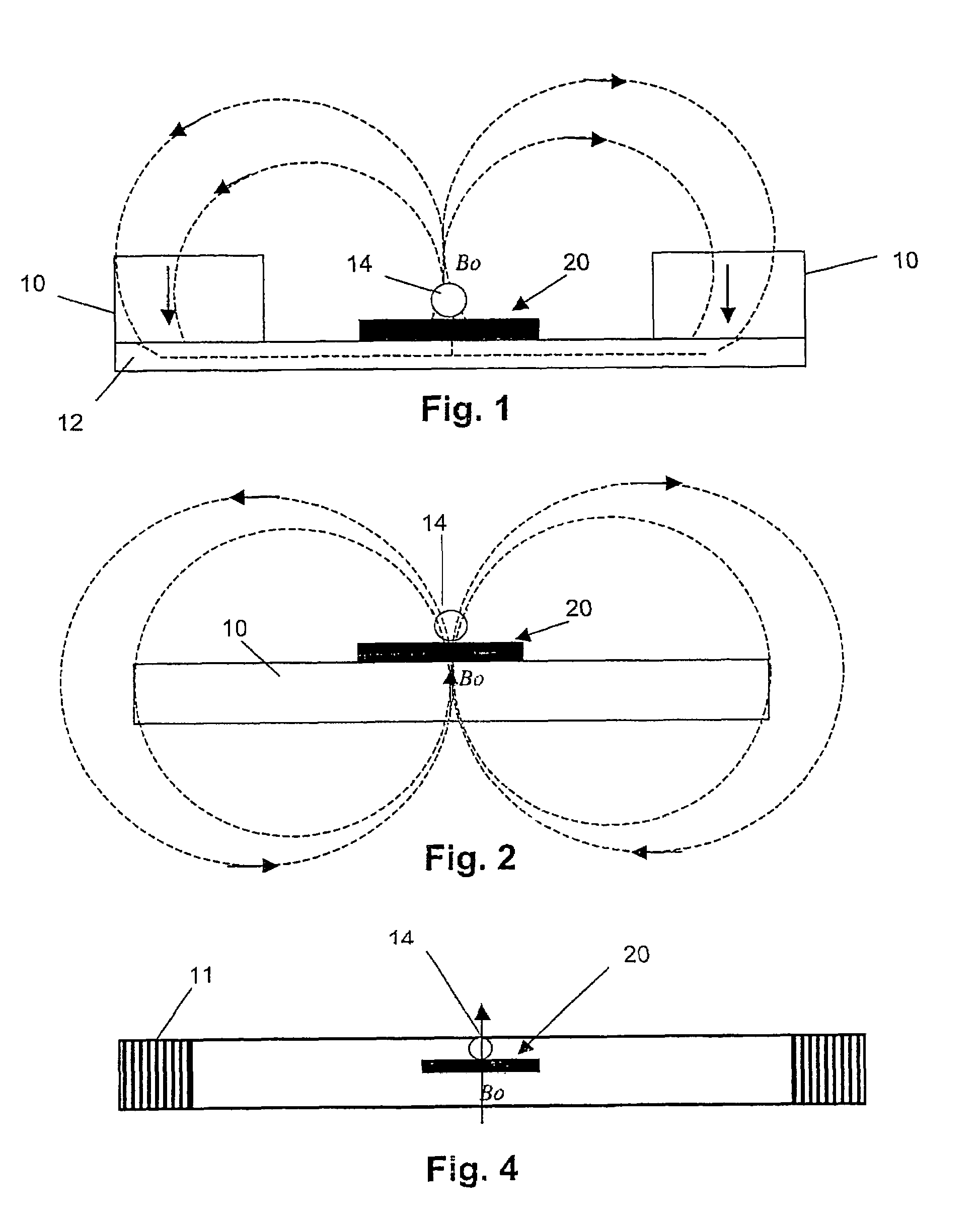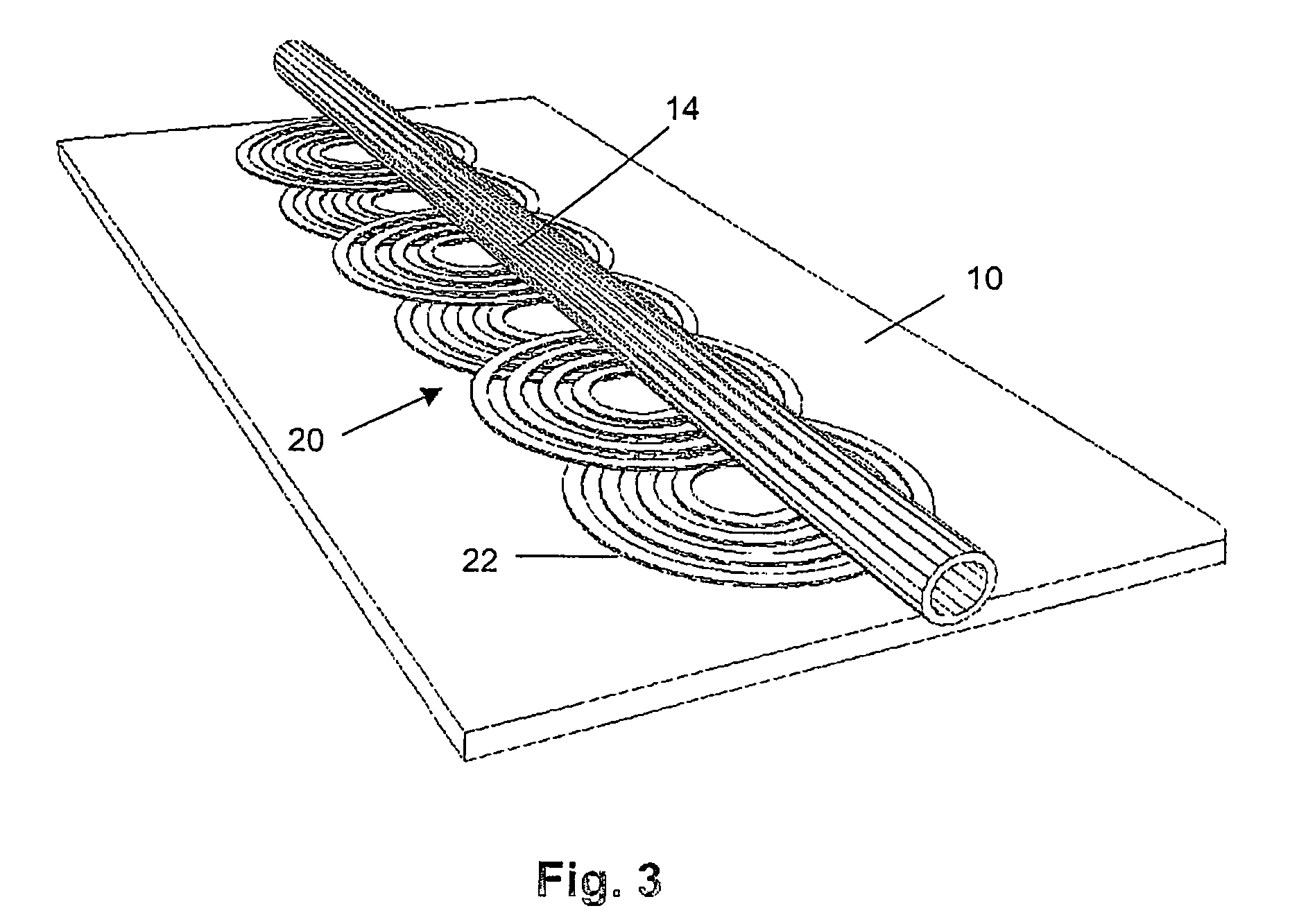Magnetic bead manipulation and transport device
a technology for magnetic beads and transport devices, which is applied in the direction of electrostatic separation, water/sewage treatment by ion exchange, chemical/physical processes, etc., can solve the problems of cumbersome generating a ‘moving field’, difficult task for manipulating these beads in general and transport in particular, and achieves the effect of higher speed
- Summary
- Abstract
- Description
- Claims
- Application Information
AI Technical Summary
Benefits of technology
Problems solved by technology
Method used
Image
Examples
Embodiment Construction
[0037]A first example of a bead transport structure according to the invention is shown in schematic lateral view in FIG. 1. Two bar-shaped NdFeB permanent magnets 10, for example measuring 40 mm×15 mm×8 mm, are placed on top of a soft magnetic sheet 12, and generate a uniform field B0 (for instance 50 mT) over the total length of a microfluidic glass capillary 14, for instance 1 mm outer diameter, 0.5 mm inner diameter. A coil array 20 is positioned on the magnetic sheet 12 directly underneath the capillary 14.
[0038]The capillary 14 contains microbeads in a suitable fluid, for example water. The microbeads typically have dimensions from 0.01 to 10 μm and can be suspended in water and injected in the capillary 14. They can for example be made of Fe3O4. Different types of suitable particles and coatings are listed in WO99 / 49319. An example of suitable magnetic microbeads are Streptavidine MagneSphere® Paramagnetic Particles available from Promega Corporation, Madison, USA. Such parti...
PUM
| Property | Measurement | Unit |
|---|---|---|
| distances | aaaaa | aaaaa |
| magnetic field | aaaaa | aaaaa |
| displacement | aaaaa | aaaaa |
Abstract
Description
Claims
Application Information
 Login to View More
Login to View More - R&D
- Intellectual Property
- Life Sciences
- Materials
- Tech Scout
- Unparalleled Data Quality
- Higher Quality Content
- 60% Fewer Hallucinations
Browse by: Latest US Patents, China's latest patents, Technical Efficacy Thesaurus, Application Domain, Technology Topic, Popular Technical Reports.
© 2025 PatSnap. All rights reserved.Legal|Privacy policy|Modern Slavery Act Transparency Statement|Sitemap|About US| Contact US: help@patsnap.com



